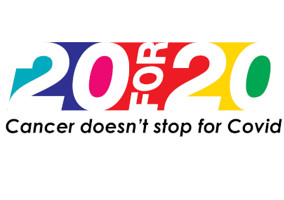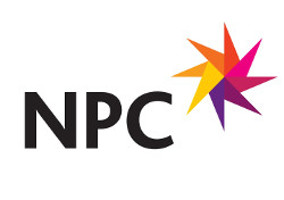Five years ago, when I was head of commissioning at Leicestershire County Council, we faced a big problem: there weren’t sufficient residential places for children in our care as it was, let alone for the numbers of looked-after children in the county that we were expecting, which would require an additional £14.7m of funding over the next three years. Yet we needed to find savings of £3.7m in children’s social care over the period.
On top of this, there was real distrust between commissioners and service providers in the market because of these budget constraints and the inflexibilities in the contracting model. I knew we needed to find a way of working together with providers rather than always battling against each other. We needed to change the whole system.
I had an idea. Wouldn’t it be great if we had a key partner who was an expert in designing and delivering innovative solutions to improve the lived experience of children and families, who could work alongside the council to bring a critical friend view, help us to design and develop new service models, and potentially be a delivery partner moving forward? All under one procurement.
So, over the next year, we worked towards this vision of procuring a partnership, rather than a service, where the partner would co-invest, co-design and co-deliver flexible, responsive services to support Leicestershire’s children, young people and families.
Overcoming challenges
This was a completely new way of working and it inevitably attracted opposition from within the council bureaucracy and the market. The biggest challenge was how to develop a contractual model that complied with procurement regulations while also being flexible enough to respond to multiple and changing needs and opportunities. Another issue was how we would price the tender. But one by one, we overcame every barrier. For example, we worked closely with lawyers and other experts to explore contracting approaches not normally used in social care. This led us to make creative use of new freedoms in the 2015 Public Contracts Regulations to come up with a two-tier contractual framework that would meet our twin objectives of compliance and flexibility. The resulting tender allowed us to assess the suitability of potential partners, rather than competing solutions.
Children’s Innovation Partnership
After 12 months, we went out to tender for the new Children’s Innovation Partnership, and Barnardo’s was the winning bidder for a 10-year contract that started on 1 December 2018. The financial value was based on the total spend of services commissioned in the council’s Care Placement Strategy, which was £700m over 10 years – although we did not expect the entire contract would be delivered by the successful partner.
The key objectives were to co-design and co-deliver innovative new services for children on the edge of care, in care, and leaving care, that would focus on outcomes and value for money. The contract also required Barnardo’s to invest its own resources in reviewing and developing new ways of working.
We had some fantastic outcomes in the first two years of the partnership, where we became really effective at bidding together and won almost £1.9m of new funding for projects with children and families – opportunities that Leicestershire alone might previously have struggled to bid for.
Alongside this, we also worked with a range of other providers in the residential care market to co-produce a dynamic purchasing system. With these two innovations, Leicestershire really has started to achieve whole-system change in the market.
The first service design brief
A co-design team led by Barnardo’s produced the first service design brief. The new service that emerged will include an assessment and resource team to support the most vulnerable young people, a hub resource including three highly supported assessment beds, and three additional three-bedroom homes, with support, for children at risk of sexual exploitation. The business case and financial modelling suggest that this new model could save £359,000 in one year.
The capability and willingness of Barnardo’s to make an upfront investment into the partnership was key to its success and led to increased resources and efficiency. The charity’s expertise and broad service base, combined with its size and agility in being able to deploy staff and manage resources, was key to this and might put similar innovation partnerships beyond the reach of smaller, more niche organisations.
The way we wrote the collaboration agreement meant that it could be used as a vehicle for other organisations to commission through as well. For example, Northamptonshire’s Children’s Trust, police and crime commissioner and Health Board have used it to commission Barnardo’s to deliver family group conferencing, carry out trauma-informed training with its officers and deliver the Keyworking Service for young people with a learning disability and/or autism.
Using voluntary income differently
Alongside the Children’s Innovation Partnership, Barnardo’s has also developed three other programmes on themes of mental health and wellbeing, care journeys, and child sexual exploitation. These are strategic partnerships with local authorities that use Barnardo’s voluntary income to support long-term, systemic change that isn’t just service delivery. These programmes represent long-term investment. Voluntary funding is being used in a tangibly different way – rather than focusing on commissioned services, they aim to identify what works in promoting place-based systems change.
I was really interested in this approach to using voluntary income, so in 2020 it was agreed that I would join Barnardo’s on secondment for 12 months to support them in developing their strategy for new strategic partnerships. At the end of that period, Barnardo’s recognised the need for a permanent post to drive this agenda forward, and I was appointed to the role. For the last 18 months, I’ve been permanent at Barnardo’s, helping to influence and progress this agenda nationally, involving other local authorities and defining the conditions and principles of these partnerships.
Spreading the learning
In each of the partnerships, learning partners have been appointed to evaluate the impact and outcomes for children and families, and all of that learning is being brought together to inform future contracts. This rich vein of evidence has enabled Barnardo’s to be more proactive in seeking out further partnerships; we are now approaching local authorities and, more recently, integrated care boards (ICBs), and informing them how we are able to help them co-design, co-develop and co-deliver services. We let them know that we can put a team into the partnership, together with resources from Barnardo’s and resources from the local authority or ICB, to examine their problem and create a space for innovation and co-design.
For example, last year Barnardo’s entered into a nine-month partnership with Essex County Council looking at, again, local sufficiency for residential care. As part of that programme, Reimagining Residential Care, we carried out a comprehensive data research project across Essex, which resulted in a recommendations paper to the council’s families team.
We are also about to begin an initial one-year strategic partnership with London Borough of Sutton, bringing joint resources to a potential three-year programme of work on how to effect long-term systemic change in the special educational needs and disability (SEND) pathway in Sutton.
And Barnardo’s has partnered with the Institute of Health Equity and invested voluntary income into developing three Health Equity pilots – these were developed by inviting expressions of interest from the new ICBs to enter into health equity collaboratives, and we have just awarded three collaboration agreements following a shortlisting process. Our Health Equity Collaborative seeks to enable children and young people to live healthy, happy lives, irrespective of the circumstances of their birth, and despite the current economic climate. Over a three-year programme, we will co-design a Children and Young People’s Health Equity Framework with the Integrated Care System, local civil society partners, and children and young people.
Barnardo’s continues to provide leadership in developing collaborative approaches to co-designing systems change, and we are doing our best to share our experiences of collaboration to promote a system based on shared vision and trust. Recently we chaired two roundtable discussions with influential people such as Julian Blake, author of The Art of the Possible in Public Procurement; Jonathan Bland, who leads the E3M Bold Commissioners Group; and Martin Quinn, who runs National Commissioning and Contracting Training Conferences.
We’ve also been invited to present our learning at forums including the Public Services Transformation Academy and the Institute of Public Care National Commissioners Conference. For me, I’ve gone from being commissioner to provider, but my ambition has always been to try to bring both together into a space where we’re not competing, but dismantling barriers that are preventing us from giving the best impact to children, young people and families. It feels like we are getting there.
Liz Perfect is head of strategic partnerships at Barnardo’s and was previously head of commissioning at Leicestershire County Council
Related Articles












